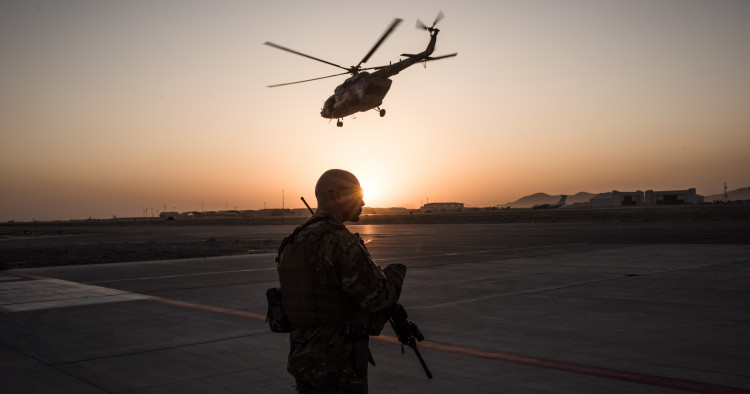In his April 14 speech, President Joe Biden stated that despite withdrawing all U.S. troops from Afghanistan, his administration will continue to do two things from over the horizon: First, it will “reorganize our counterterrorism capabilities…to prevent [the] reemergence of …the threat to our homeland.” Second, it will “keep providing assistance to the Afghan National Defense and Security Forces.”
Even though no one in the administration has officially said it yet, the second goal is assumed to be off the table now for the simple reason that a national Afghan army no longer exists. With the Taliban taking over the government, many Afghan soldiers have surrendered, some have joined the Taliban, while others have fled to neighboring countries.
The first goal, which relates to our ability to hit counterterrorism targets in Afghanistan from a distance, is feasible, but it requires a U.S. presence on the ground. No, not the thousands of American troops we had prior to the withdrawal, but merely dozens of CIA covert operators to enable a more effective counterterrorism strategy in the country (it’s unclear if the CIA already has a presence).
The U.S. military has lots of fighter, tanker, surveillance, and bomber aircraft at Al Udeid Air Base in Qatar, Al Dhafra Air Base in the United Arab Emirates, and Kuwait’s Ali Al Salem and Ahmad al-Jaber air bases that can strike enemies in Afghanistan from afar. But we need American eyes on the ground as well as a local partner to know which threats to neutralize, when, and how. The main reason why we were effective in the counterterrorism mission in places like Syria, Yemen, Libya, Somalia and elsewhere was because we had, and in some areas still have, a light, specialized footprint and a trusted domestic ally to contain and collect intelligence on the enemy.
But not all of the Afghan military has folded. There are elements within the Afghan Air Force and Special Operations Forces, with which we worked very closely over the past two decades, who are resisting and joining hands with Panjshir Commander Ahmad Massoud, the son of Ahmad Shah Massoud who led the Northern Alliance of forces as it fought the Taliban in the 1990s. In an opinion for The Washington Post a few days ago, Massoud Jr. has made it clear that he and his men have every intention of stopping the Taliban from completely taking over the country, but he also asked the U.S. for help with arms and logistics.
We can and must provide that assistance not to help defeat the Taliban, fix Afghanistan, or remove our moral stain, but to achieve a much more limited objective, one that’s stated by the President himself, which is to ensure that no major attack against the U.S. or U.S. strategic interests is launched from Afghanistan.
Yet we can’t do that strictly from afar. If we’re going to militarily assist the Afghan resistance that’s currently forming, the CIA has to have personnel on the ground to confirm where the weapons we’re sending are going and whether they’re being properly used, if at all. Only we can effectively monitor arms consumption rates and advise our Afghan partners on how to use the right type of ordnance for the right mission. Weaponeering—i.e., designing an attack with weapons—is crucial. You don’t drop a two-thousand pound bomb on a mud hut.
Photo by Andrew Renneisen/Getty Images
The Middle East Institute (MEI) is an independent, non-partisan, non-for-profit, educational organization. It does not engage in advocacy and its scholars’ opinions are their own. MEI welcomes financial donations, but retains sole editorial control over its work and its publications reflect only the authors’ views. For a listing of MEI donors, please click here.













